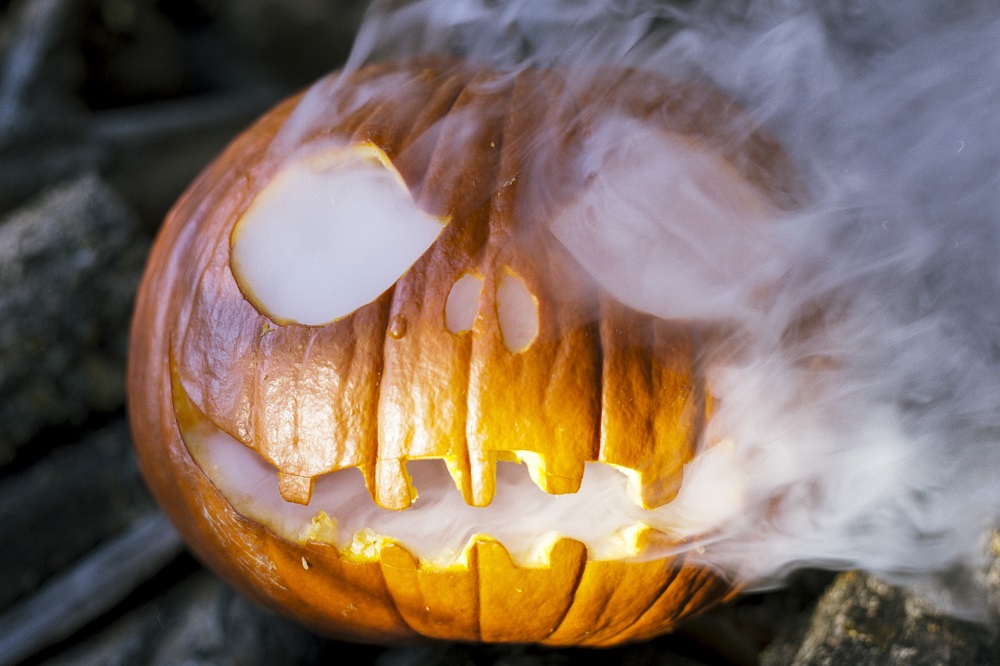Halloween in Wales: The spine-chilling tale of the Welsh Jack o’-lantern

Mark Rees
Nothing quite encapsulates the spirit of Halloween like the flickering face of a finely-carved jack-o’-lantern.
Much like the pumpkin into which it is sculpted, the glowing eyes and grinning grimace have been well and truly hacked into the holiday itself, thanks in large part to its association with Hollywood horror films and the tradition of trick or treating.
Despite being popularised in America, however, the origins of this sinister-looking fruit can be traced back to the root vegetables of Britain and Ireland. The Celtic people of Scotland and Ireland, who are credited with exporting the trend across the Atlantic in the nineteenth century, would traditionally cut up a turnip with which to repel evil spirits on October 31,
The practice is said to have been just as prevalent in Wales, where it was the more readily-available swede which was chopped into a menacing gaze ahead of Nos Calan Gaeaf, the night which marked the end of the harvest and the start of winter, and when the veil between Annwn – the Otherworld – and our own was at its thinnest.
If the stories are to be believed, the Welsh Jack y Lantern (or Jac y Lantern) wasn’t solely an inanimate object with which to decorate the home. Much like fellow folkloric omens of doom the toili (phantom funerals) and the canwyll corff (corpse candles), the Jack y Lantern was said to have a mind of its own and would lurk the darkness at night, where to encounter one was a sure sign of something very bad indeed.
In one such case from near Pontypridd in 1898, an ‘extraordinary moving light’ was causing ‘considerable alarm’ in the vicinity of an out-of-use colliery. The press reported that a local man from Llantwit Fardre, who occupied a ‘responsible position’, did solemnly declare that on two nights in succession he had seen the ‘dreaded ghost’.
Haunted
It was while walking through the old pit, with a lantern in-hand to illuminate the way, that he ‘happened to gaze into the trees and bushes… and he fancied he saw a light in the midst of the trees.’ Assuming it was another person also carrying a lantern, he paused to see if his fellow traveller would be walking in the same direction, but they came no closer.
It was said that ‘beyond moving up and down, and a little way backward and forward, there was no sign of advancing towards the road on the part of the extraordinary carrier of the peculiar light.’ He attempted to call to them, but the only reply he received was his own voice eerily echoing around the hills and mountains.
In a hurry to reach his destination, and somewhat spooked by the events, he tried one last time to catch their attention, but ‘the silent light only flickered and played, and answered not! It remained there when he left, and, as he glanced backwards, he noticed the dancing light casting a lurid glare upon the overhanging boughs, and seemingly hovering on the brink of the old pit.’
Believing that he had encountered something supernatural in the woods, he dashed to Church Village, where he stopped at the post office to tell Mr Bryant the postmaster, who was in the company of the local postman, of the ‘queer vision’ en route. Far from putting his mind at ease, they confirmed that the area was indeed said to be haunted, and suggested that the light might be the wandering spirit of someone who had fallen, or possibly jumped, into the old pit.
Determined to ‘fathom the mystery’, he vowed to return to the same spot on the following night and, true to his world, did just that. In order to dismiss the suggestion that what he had seen was the reflection of his own lantern, he extinguished his own light just before arriving, and while in total darkness he once again witnessed the strange sight. His experience was recorded as follows:
‘In the midst of the bushy undergrowth of the Stank Avenue, he observed, once more, the faint glimmer of the magic light of Jack y Lantern – the dread prowler of the Welsh marshes, whose flickering, gassy beacon often lured the unwary travellers of past generations through bogs and dykes and ditches into the midst of hobgoblins, to be frightened, into fairy rings to dance for a year and a day, or into the presence of the black being whose cloven hoofs, forked tail, and horned skull proclaimed him to be the Prince of the Kingdom of Darkness! It was there – at Llantwit! There could be no mistake about it, and, remembering the sad tale of a servant of his father who had once been led a pretty dance by the self-same Jack y Lantern, he positively declined to follow the dancing phantom light which seemed to beckon him to follow it off the high road, and when he reached the end of his journey he told, with bated breath, the extraordinary tale.’

A version of this story originally appeared in Ghosts of Wales: Accounts from the Victorian Archives by Mark Rees. It is available to buy here.
Mark Rees is a journalist and author based in Port Talbot. For more than fifteen years he has published articles about the arts in some of Wales’ best-selling newspapers and magazines, where his roles have included arts editor and what’s on editor for daily, weekly and monthly titles.
He has written a number of books, with those of a supernatural nature including Ghosts of Wales: Accounts from the Victorian Archives (2017), The A-Z of Curious Wales (2019) and Paranormal Wales (on sale 2020).
Mark can be followed on social media here: Twitter| Facebook| Instagram.
Support our Nation today
For the price of a cup of coffee a month you can help us create an independent, not-for-profit, national news service for the people of Wales, by the people of Wales.






Interesting story but once the name Llantwit was used I was totally distracted by thinking how much I hate that insulting slur that the anglicisation of Llanilltud is.